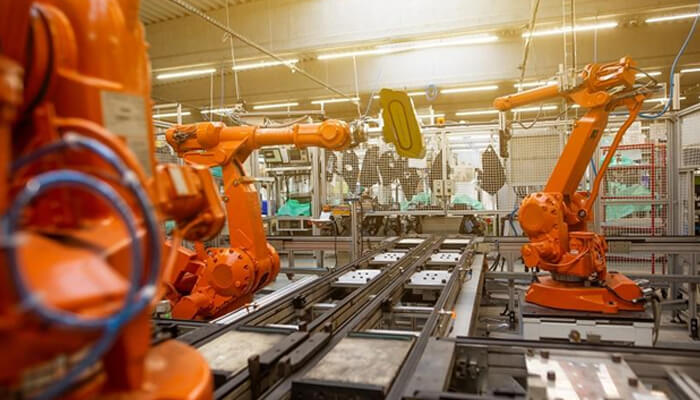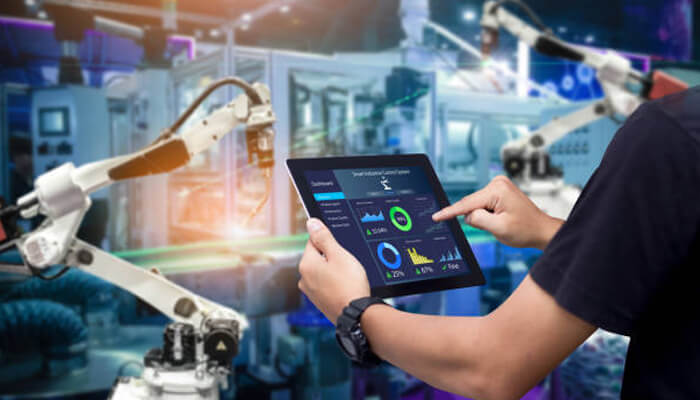In a rapidly advancing digital age, businesses are in a race not just to progress but to evolve. “Future-proofing” is no longer a luxury—it’s a necessity. And at the forefront of this technological evolution is Industry 4.0, where automation plays a pivotal role. With the intricate dance of machines and data, a myriad of industrial automation parts come together to create an orchestra of efficiency.
Understanding Industry 4.0
Industry 4.0 isn’t a new concept. It’s the fourth industrial revolution, following the heels of steam power, mass production, and digital technology. But what makes Industry 4.0 stand apart? It’s an amalgamation of advanced manufacturing techniques fused with smart technology. It breathes life into factories making them smart, adaptable, and cutting-edge.
The driving force behind this transformative wave is the seamless integration of the Internet of Things (IoT) and automation technologies. Machines now talk to each other, perform tasks without manual intervention, and even predict maintenance needs. But the unsung heroes in this intricate setup? Those would be the industrial automation parts.
Each part, no matter how insignificant it might seem, serves a unique purpose. They are the bedrock ensuring that smart factories run like well-oiled machines—literally and metaphorically. An in-depth understanding of these components isn’t just for tech gurus; it’s pivotal for anyone looking to steer their business into the future.
The Tangible Benefits of Automation in Business
The magic of automation is far-reaching. On the surface, it boosts efficiency, cuts down waste, and reduces human error. Delve a bit deeper, and the benefits magnify. Automated systems offer unparalleled consistency, ensuring that every product rolling off an assembly line is uniform—a dream for quality assurance.
Another often overlooked advantage is the reduction
in physical strain on human workers. Machines take on the heavy lifting, the repetitive tasks, the mundane jobs. This doesn’t render human workers obsolete; rather, it allows them to focus on more complex tasks that require critical thinking.
Safety is another major checkpoint. With machines handling more dangerous tasks, workplace injuries can see a substantial decline. This not only shields businesses from potential lawsuits but also fosters a healthier work environment.
And then there’s scalability. An automated system can easily be scaled up or down based on the business’s needs. With the right set of industrial automation parts, expanding production or cutting it down based on market demands becomes a feasible task.
Adapting to the Changing Face of Automation
One of the key challenges businesses face is staying updated. With technological advancements happening at lightning speed, there’s always something new on the horizon. And the realm of industrial automation parts is no different. Components get outdated, newer versions offer more efficiency, and sometimes, the entire system might need an overhaul.
Adapting doesn’t necessarily mean a complete transformation. Often, it’s about making minor tweaks and updates. It could be as simple as integrating a new software system or replacing a few outdated components. Remember, the goal is to be more efficient, not necessarily to have the latest tech.
And this is where a keen understanding of the vast world of industrial automation parts becomes vital. By knowing what’s available, businesses can make informed decisions on what they need versus what they want.
Seamlessly Integrating Automation: A Step-By-Step Approach
Entering the expansive domain of automation appears alluring, especially with its vast advantages on display. Yet, achieving a seamless integration leans heavily on a systematic and progressive strategy. It’s not merely about possessing top-tier industrial automation parts; it’s about guaranteeing their congruence with pre-existing systems.
1. Operational Appraisal and Structuring:
Prior to introducing new components, one must critically evaluate the operational status quo. Grasping the pillars and pitfalls of present systems, pinpointing production chokepoints, and identifying segments ready for automation transformation are paramount. Consider this phase as the schematic stage; minutiae make the difference.
2. Component Selection Criteria:
It’s naive to assume every automation piece aligns with your requirements. Filtering through myriad choices, juxtaposing benefits with drawbacks, and earmarking components resonating with organizational objectives is pivotal.
3. Prototype Trials:
Venturing head-on might not always be wise. Start by testing the waters, incorporating parts at a controlled scale, and keenly observing efficacy, productivity, and unforeseen challenges. This provides a realistic perspective on the larger picture when operations intensify.
4. Human Capital Acclimatization:
The introduction of automation doesn’t eclipse human efforts. However, it mandates that personnel grasp nuances of these novel systems. Tailored training modules, interactive workshops, and hands-on demonstrations can bridge this knowledge gap, enabling seamless human-machine collaboration.
5. Ongoing Oversight and Response Mechanisms:
Automation is an evolving paradigm. After integrating fresh components, relentless performance scrutiny is indispensable. Periodic inspections, upkeep regimens, and responsive feedback mechanisms fortify system robustness, preempting potential hitches.
Tackling automation incorporation with methodical precision empowers enterprises to offset uncertainties, maximize returns, and streamline the transformative journey. The overarching mission? Supercharging operational modalities, with automation as the driving force guiding enterprises towards a prolific, streamlined horizon.
Laying the Groundwork for a Stellar Tomorrow
In an era where automation and Industry 4.0 dominate discourse, recognizing their value is crucial. As data-centric decision-making surges and mechanized processes intertwine with routine tasks, enterprises resisting evolution risk obsolescence.
Navigating the intricate landscape of full-blown automation may seem overwhelming. However, armed with the appropriate toolkit, a lucid comprehension of the incentives, and a reliable ally adept in the labyrinth of industrial automation parts, the voyage promises rich dividends.
Ultimately, safeguarding your enterprise’s future transcends mere technological assimilation. It’s a commitment to perpetual relevance in a dynamic market arena. It’s the pledge of endurance and triumph. With automation as a formidable ally, the horizon shows unparalleled promise.



